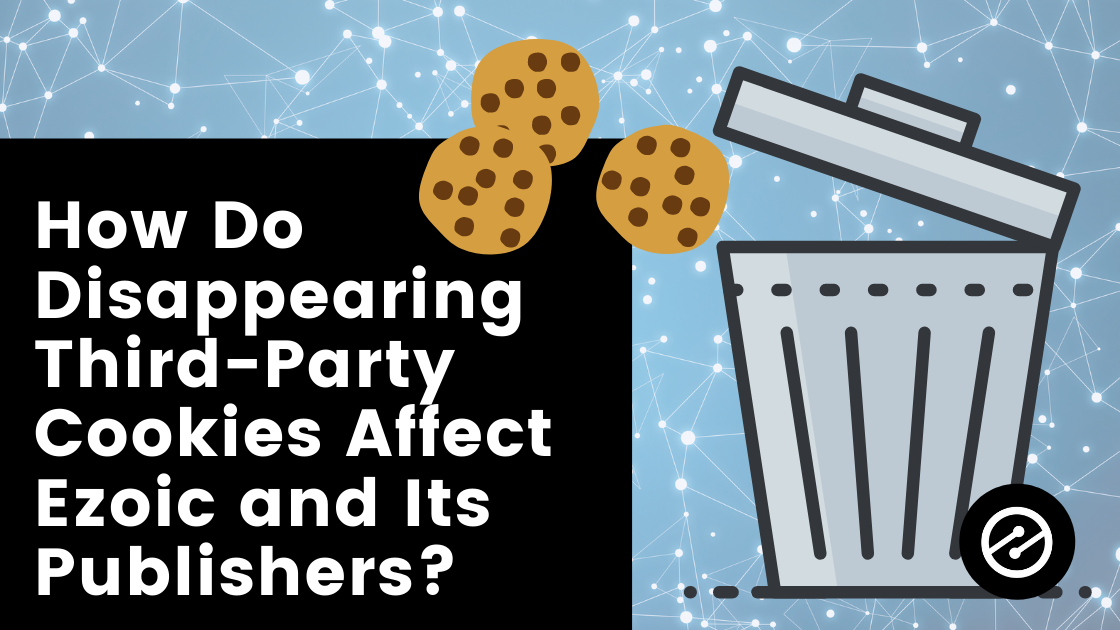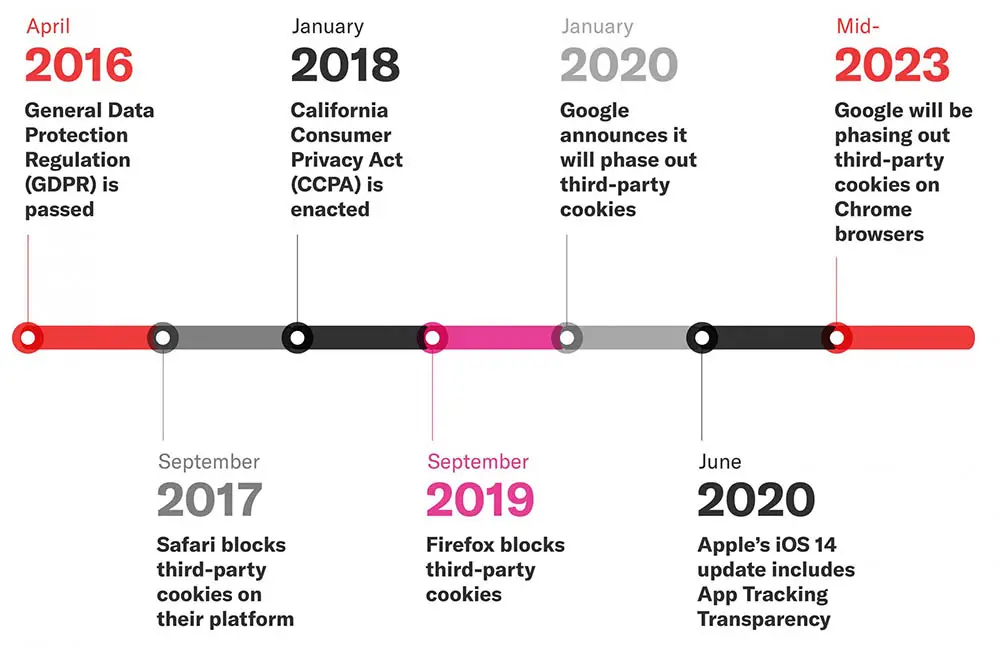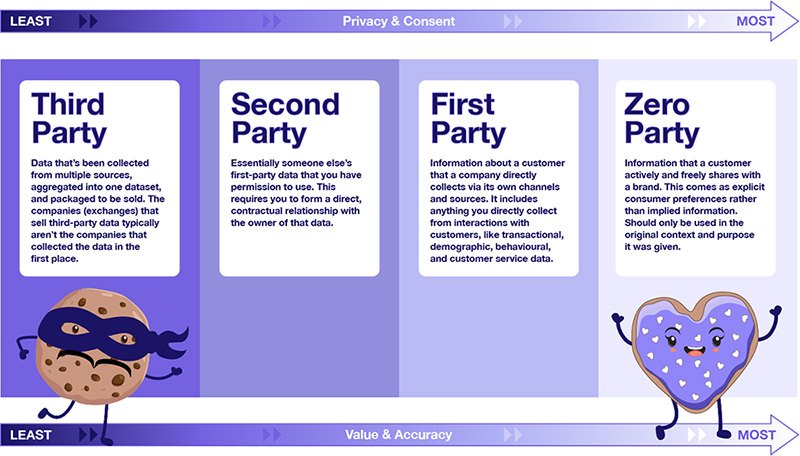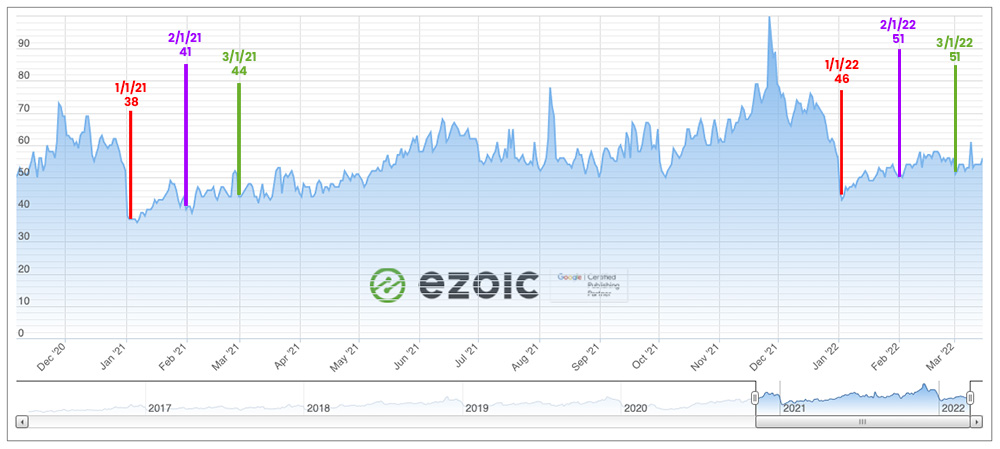
How Do Disappearing Third-Party Cookies Affect Ezoic and Its Publishers?
Get helpful updates in your inbox
Using third-party cookies to target consumers has been the advertising norm for years now. By now, most publishers have probably heard that third-party cookies will be disappearing sometime in the next year or so due to privacy concerns. There are some big players in the mix that have led the charge in abandoning third-party cookies. However, some Ezoic publishers may be surprised to find out their role in making third-party cookies mainstream.
This change in the advertising ecosystem may concern some content creators, as it seems the future of consumer data is at stake. However, these changes should not worry publishers too much — in fact, many publishers and marketers can actually expect to see some benefits from third-party cookies disappearing.
What are third-party cookies and how does this affect digital advertising?
Simply put, third-party cookies are a website’s way of remembering a user’s actions so they aren’t asked to repeatedly perform a task over and over — repeatedly inputting their username, for instance. Third-party cookies track users across multiple websites and then that information is used to retarget those users with more relevant ads for products and services. Ultimately, it allows an advertiser to see how many touchpoints they have with a user. This gives a user a better, more personalized experience.
However, this practice has long made users wary of privacy infringement. Since 2017, major browsers have slowly been eradicating third-party cookies. Apple and Mozilla Firefox already banned them a few years ago, and Google announced it would be getting rid of third-party cookies in 2022, although this has since been pushed to late 2023.

Third-party cookies disappearing are going to affect advertisers more than publishers. Currently, about 80% of advertisers rely on third-party cookies. Using third-party cookies helped measure campaign success and attribute conversions more accurately, which will still be important to marketers moving forward. However, this reliance is largely due to the big tech companies like Facebook and Google.
For years, advertisers were told that third-party cookies were necessary for advertising because they gave users more relevant, personalized ads that increased the chances of converting them into customers. Big tech companies have been encouraging advertisers to adopt third-party cookies for years to “avoid waste,” but this was just a way to get marketers reliant on them. Upon closer inspection, this assumption doesn’t hold a lot of merit.
Ironically, these big tech companies are now the ones pushing third-party cookies’ demise. This was largely due to fierce competition between the big tech companies; Apple saw that Google and Facebook were making the majority of their money selling ads and spun to the public that there were “privacy concerns,” giving users reason to doubt Google and Facebook’s credibility.
Instead of starting an arms race and splitting advertisers (and their budgets) between advertising platforms that offer options for a large number of targeting methods (like cookies and non-cookies), Google saw it could maintain its dominance by dropping the feature that was hamstringing them — eliminating third party cookies altogether.
So now, advertisers are scrambling to switch gears. Without third-party cookies to provide this pertinent information about users, advertisers will need to adopt new ways of doing business and buckle down on already successful practices.
What will replace third-party cookies?
There are still plenty of ways marketers can collect data on users to be used for advertising. It’s just going to look a little different than it has historically. Disruptions in e-commerce, web3, cloud software, and new emerging vertical platforms have provided a suite of advantages for advertisers that, in most cases, offer far greater effectiveness and efficiency than third-party cookies.
Remember, not all cookies are going away — just third-party cookies. First-party cookies are directly stored by the website visited instead of across websites.

What has already become more popular over the last few years and will likely continue to increase in popularity are identity solutions, which can use first-party cookies. As Mathieu Roche, co-founder and CEO of shared ID company ID5, put it: Identity solutions, or a shared ID, is “A key in a database. It is the first bit of code that you can attach all you know about the user to, but it has to be unique. The purpose is for the same ID to be shared between publishers and brands — it has to be the same key. It is a common language for ad tech.”
Another solution is Google’s Privacy Sandbox, Google’s set of application programming interfaces (APIs) it put in place as the solution to the elimination of third-party cookies. Advertisers can then use the APIs to obtain data information like conversions and federated logins.
Other advertising practices, like contextual advertising, will need to be given more attention. Contextual advertising is placing ads on a page based on the content of the pages. This could mean placing an ad for climbing shoes on a climbing website. Email advertising and social media advertising will also become more pertinent and popular.
While eliminating third-party cookies certainly solves some privacy concerns, ultimately it will lead to other troubling advertising practices as well like fingerprinting, which is more invasive than normal cookie tracking. Fingerprinting is when a company makes a profile of you based on hardware and software you have, and can even track information like the type of screen you are using or choice of web browser. Additionally, fingerprinting tracks users for months, even if you clear your browser storage or use a private browser.
How do disappearing third-party cookies affect Ezoic and its customers?
You may be wondering if the death of the third-party cookie affects Ezoic in any way since we work with advertisers. The short answer is that Ezoic will not be affected negatively by the death of third-party cookies, nor will sites using Ezoic. In fact, the death of third-party cookies will be good for sites on Ezoic and good for business overall.
Ezoic sites are likely to make more money than ever than sites not using Ezoic. Ezoic customers are at an advantage because of the platform’s multivariate testing, which is always working to increase ad rates while also balancing UX. This means as ad rates increase, the technology is working to increase it even higher. Additionally, it will only improve business for Ezoic because since late last year, we’ve seen a big influx of sites from third-party service providers that make a living reselling a commodity wrapped in marketing.

Digital advertising has never seen more money flowing into campaigns than right now, and ad rates are the highest in recorded history for publishers. Ad rates will continue to increase overall this year (though, as usual, there is likely to be a lull in Q3) and it is expected that ad rate records will be broken again this Black Friday.
So, although third-party cookies disappearing is certainly a shock to the current system, publishers — both Ezoic and non-Ezoic users — are actually at an advantage. Though Google’s elimination of third-party cookies will be the biggest change to the current advertising system, the market has had time over the years to slowly adjust since Apple and Mozilla already banned them a few years ago. A new system, like IDs, will likely take over, providing advertisers with the information they need and leveling out the playing field once more.
Whitney is a former journalist for numerous city-wide newspapers and online media sources and an accomplished digital and creative marketer. She has multiple years of digital publishing expertise and contributes regularly to all of Ezoic's content sources.
Featured Content
Checkout this popular and trending content

Ranking In Universal Search Results: Video Is The Secret
See how Flickify can become the ultimate SEO hack for sites missing out on rankings because of a lack of video.
Announcement

Ezoic Edge: The Fastest Way To Load Pages. Period.
Ezoic announces an industry-first edge content delivery network for websites and creators; bringing the fastest pages on the web to Ezoic publishers.
Launch

Ezoic Unveils New Enterprise Program: Empowering Creators to Scale and Succeed
Ezoic recently announced a higher level designed for publishers that have reached that ultimate stage of growth. See what it means for Ezoic users.
Announcement
